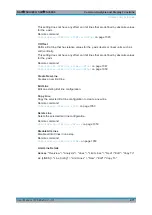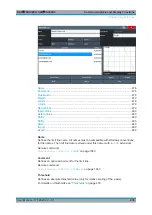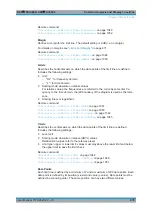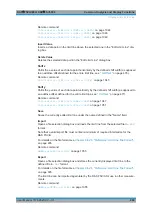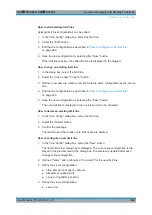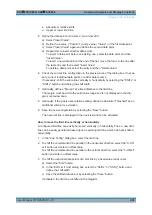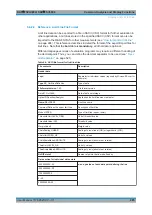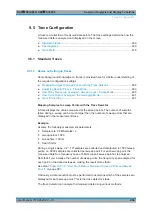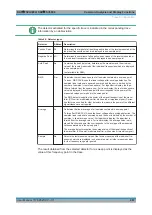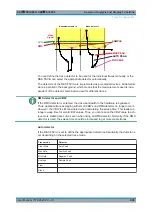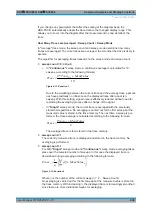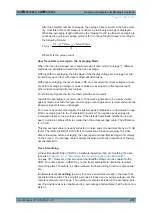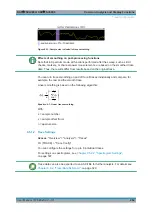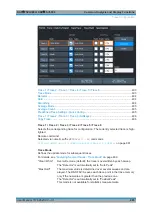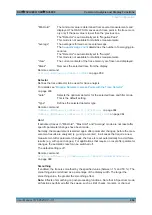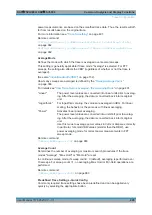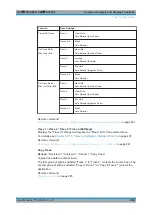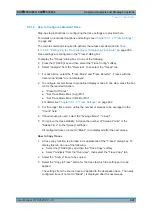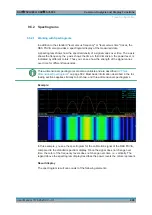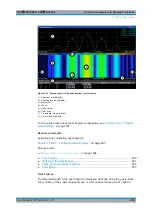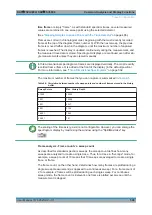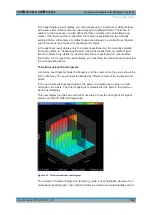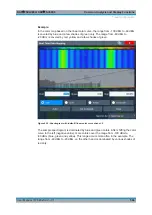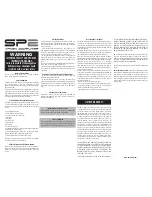
Common Analysis and Display Functions
R&S
®
FSVA3000/ R&S
®
FSV3000
491
User Manual 1178.8520.02 ─ 01
After the selected number of sweeps, the average trace is saved in the trace mem-
ory. Until this number of sweeps is reached, a preliminary average is displayed.
When the averaging length defined by the "Sweep Count" is attained, averaging is
continued in continuous sweep mode or for "Continue Single Sweep" according to
the following formula:
N
MeasValue
Trace
N
Trace
old
*
)
1
(
Where N is the sweep count
How Trace Data is Averaged - the Averaging Mode
When the trace is averaged over several sweeps (Trace mode: "Average" ), different
methods are available to determine the trace average.
With logarithmic averaging, the dB values of the display voltage are averaged or sub-
tracted from each other with trace mathematical functions.
With linear averaging, the level values in dB are converted into linear voltages or pow-
ers before averaging. Voltage or power values are averaged or offset against each
other and reconverted into level values.
For stationary signals, the two methods yield the same result.
Logarithmic averaging is recommended if sinewave signals are to be clearly visible
against noise since with this type of averaging noise suppression is improved while the
sinewave signals remain unchanged.
For noise or pseudo-noise signals, the positive peak amplitudes are decreased in loga-
rithmic averaging due to the characteristic involved. The negative peak values are
increased relative to the average value. If the distorted amplitude distribution is aver-
aged, a value is obtained that is smaller than the actual average value. The difference
is -2.5
dB.
This low average value is usually corrected in noise power measurements by a 2.5
dB
factor. Therefore the R&S
FSV/A offers the selection of linear averaging. The trace
data is linearized before averaging, then averaged and logarithmized again for display
on the screen. The average value is always displayed correctly irrespective of the sig-
nal characteristic.
Trace Smoothing
A Video Bandwidth Filter (VBW) is a hardware-based method of smoothing the trace
(see also
Chapter 8.5.1.2, "Smoothing the Trace Using the Video Bandwidth"
on page 377). However, other sweep and bandwidth settings can be coupled to the
VBW. For some signals, a VBW may not be freely selectable to obtain the required
smoothing effect. Therefore, a software-based trace smoothing function is also availa-
ble.
(Software-based)
smoothing
is a way to remove anomalies visually in the trace that
can distort the results. The smoothing process is based on a moving average over the
complete measurement range. The number of samples included in the averaging proc-
ess (the
aperture
size) is variable and is a percentage of all samples that the trace con-
sists of.
Trace Configuration

